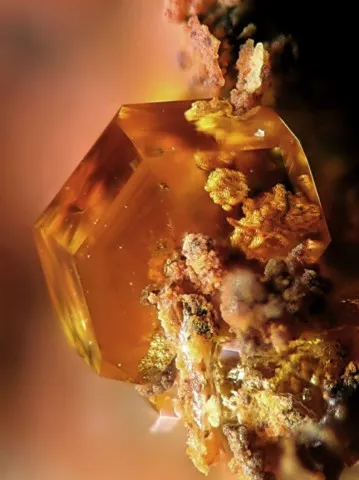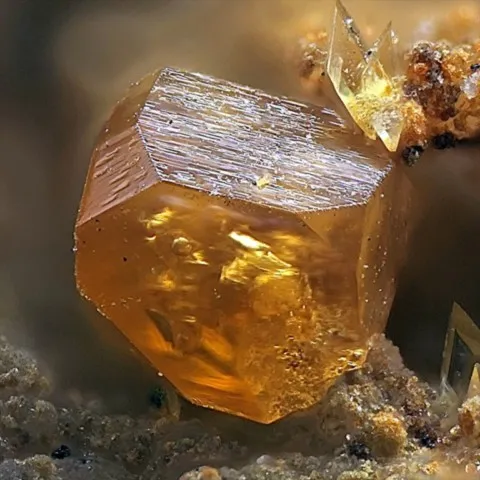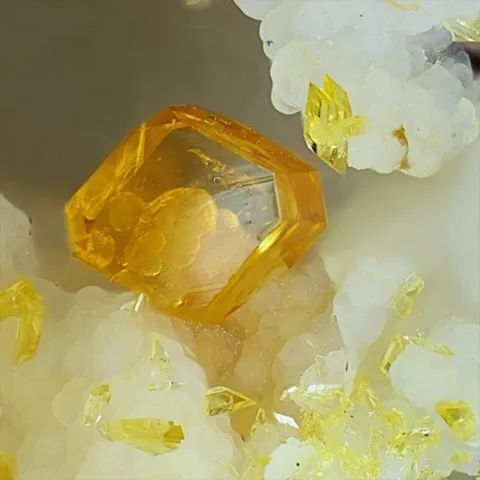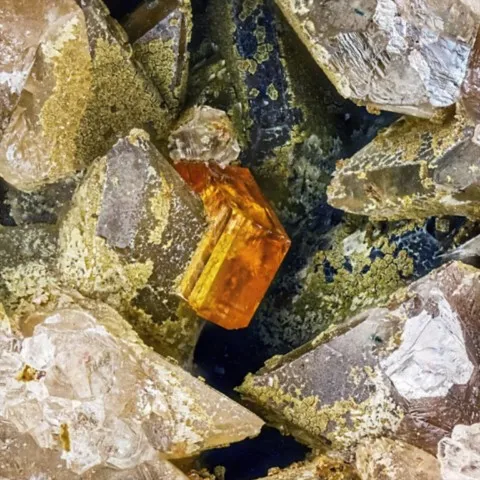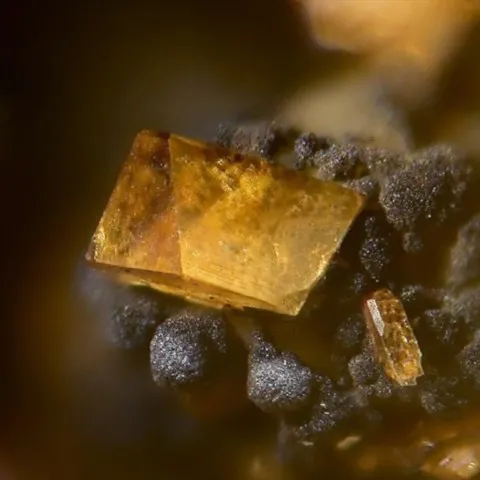PSEUDOLAUEITE
Class : Phosphates, arsenates, vanadates
Subclass : Hydrated phosphates
Crystal system : Monoclinic
Chemistry : MnFe2(PO4)2(OH)2 8H2O
Rarity : Very rare
Pseudolaueite is a secondary phosphate resulting from the alteration of other phosphates in complex granitic pegmatites. It is the polymorph of stewartite and laueite. Its name comes from the Greek pseudês (false) and laueite, because we observe a chemical relationship between these two minerals. Pseudolaueite forms thick prismatic or tabular crystals, pseudohexagonal in appearance, 3 mm maximum, of a pale yellow to yellow-orange and brown-orange color.
Main photo : Pseudolaueite from Hagendorf pegmatites, Bavaria, Germany © Christian Rewitzer
Pseudolaueite in the World
Twinning
No twins known for this mineral species.
Fakes and treatments
No fakes listed for this mineral species.
Hardness : 3
Density : 2.46
Fracture : Irregular
Streak : White
TP : Translucent to transparent
RI : 1.626 to 1.686
Birefringence : 0.060
Optical character : Biaxial +
Pleochroism : Low
Fluorescence : None
Solubility : -
Magnetism : NoneRadioactivity : None

